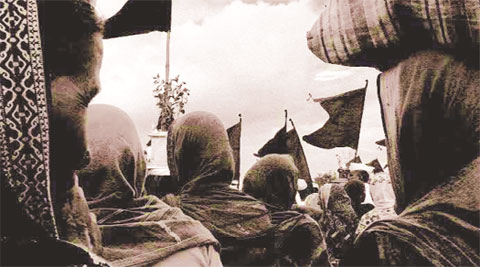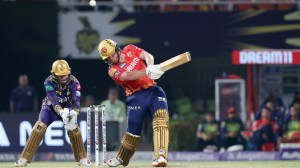- India
- International
Walking with Warkaris
A multidisciplinary project by filmmaker Rajula Shah looks at the act of walking through the pilgrimage of the Vaishnavite community
 The project maps the route that the Warkaris take to reach Pandharpur
The project maps the route that the Warkaris take to reach Pandharpur
WHEN a small group of Warkaris took a detour from the conventional route of the community’s pilgrimage, filmmaker Rajula Shah followed them. It took her to Daundaj, a village near Pune. With its vast horizon, rains and shepherds, Shah found it to be a “mysterious and enchanting place”. Drawn to it, Shah not only returned there several times to shoot her own films, she also told a few of her Film and Television Institute of India (FTII) students about Daundaj, who then filmed their projects there. “It is the wind, the water and the trees that we don’t have in our lives anymore,” says Shah, explaining her attraction to the landscape.
Over the last five years, Shah, along with filmmaker Arghya Basu as lensman, has been filming the pilgrimage the Warkaris make to Pandharpur from Dehu and Alandi. Her project explores walking as a primal, liberating act by humans. “Just the idea of leaving home for 10-15 days frees your mind — getting rid of routines and waking up to a new place everyday,” says Shah, who has mapped more places like Daundaj through the project, some of which don’t show up on a Google map.
Shah didn’t stick to the pilgrims’ traditional route. “Those who come from Andhra Pradesh and Karnataka to join the Warkaris from Maharashtra at various points, the way tributaries flow into a river,” says Shah whose interest in Maharashtra’s landscape is at the root of this project. “The wish is to find ways of mapping the crisscrossing journeys in and around the main trajectory of the Warkaris,” she says.
A visual artist and poet, Shah doesn’t know yet how her work-in-progress project is eventually going to shape up. While the experimental filmmaker wants her IFA-funded project to be as close to her own experience, she will also ensure that viewers undertake a journey of their own while viewing the film. This will be made possible through the project’s web platform. The film will be interspersed with music — songs of Tukaram and Dnyaneshwar — images and texts, including writings of her own, as well as other Marathi critics and poets such as Irawati Karve and Arun Kolatkar, all hyperlinked. What the viewer clicks will determine the audio-visual journey he undertakes. “Each viewer’s journey will be close to but also differ from my own. I am not giving them templates,” says the director, calling the project “a crossroad of cinema, poetry and anthropology”.
sankhayan.ghosh@expressindia.com
Apr 26: Latest News
- 01
- 02
- 03
- 04
- 05







































